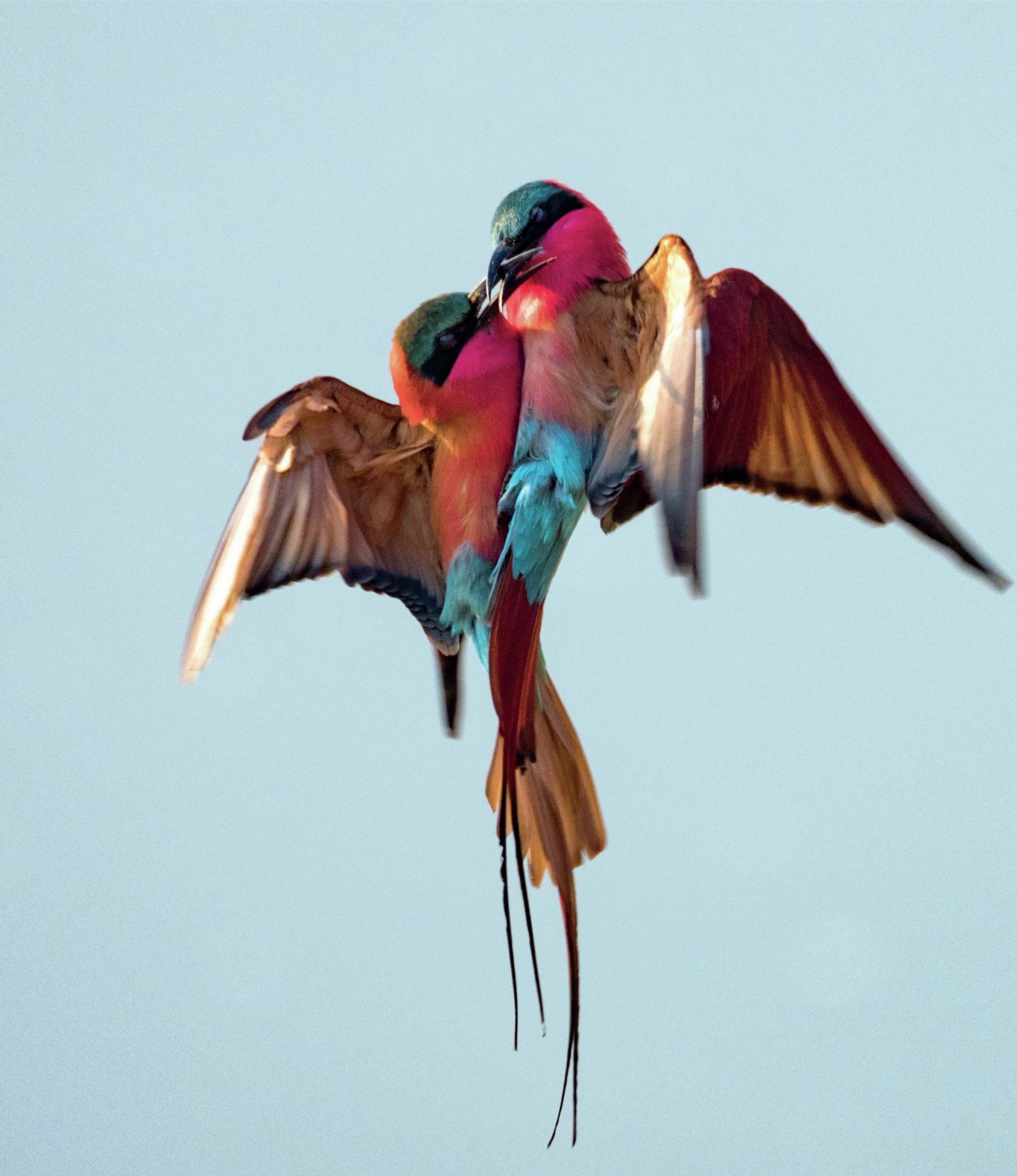
Southern carmine bee-eaters (Merops nubicoides) are among the largest of African bee-eaters. In a threestage migration, they winter in Angola, southern Democratic Republic of Congo, Tanzania and Malawi. In September they fly thousands of kilometres south to Zambia, Zimbabwe, northern Namibia or Botswana for the breeding season.
They are highly social birds, living in colonies that sometimes exceed 1000 nests. They excavate 1–2 metre long tunnels in the sandy soil along river banks, forming small, oval, unlined nests at the end, with perhaps one nest every 30 cm. This high density of birds stimulates intense competition for the best nesting sites, as well as for partners. Two males will soar into the air, twisting, turning and clashing their beaks in aerial combat. The duo shown in this photograph had their beaks interlocked as they reached the peak of the flight — the one on the right has its eyes partly closed as protection from the stabbing bill of its opponent.
Your organisation does not have access to this article.
Sign up today to give your students the edge they need to achieve their best grades with subject expertise
Subscribe




